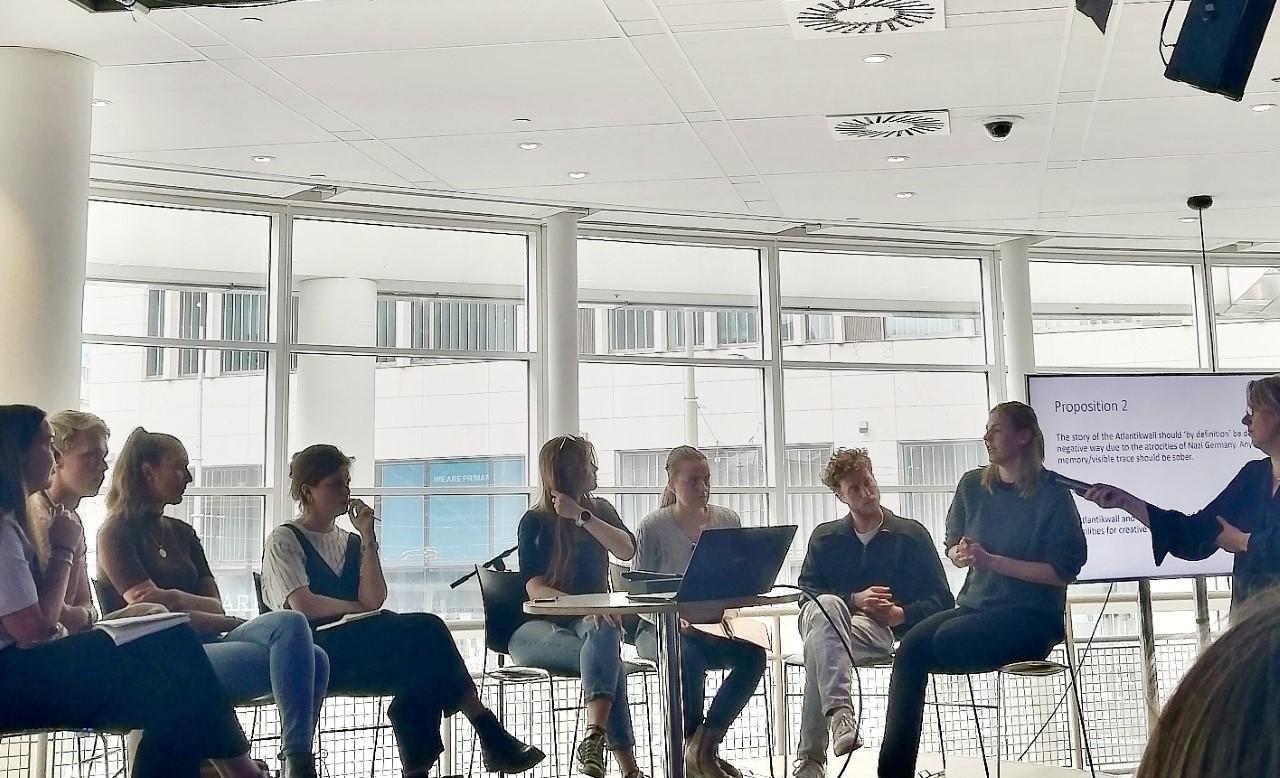Atlantikwall: pleasure or burden? - A Report by Student Reporter Karla Semak Fiedler
The LDE Centre for Global Heritage and Development held its second successful student hub between the 17th and 20th of May 2022. This year’s hub took place in The Hague and focused on the WII heritage of the Atlantikwall in terms of its meaning in the eyes of the city and its inhabitants, and of its future possibilities for education. Students of Landscape Architecture (TU Delft and Wageningen University), Urbanism (TU Delft), Architectural History (VU Amsterdam), and Applied Archaeology (Leiden University) came together to aid the municipality in forming cultural policy. The workshop was organized and guided by Dr. R. Jansen (Leiden University), Dr. G. Verschuure-Stuip (TU Delft), and Dr. R. de Boer (LDE Centre for Global Heritage and Development).
Students attended several preparatory workshops, city walks, where they visited the sites of the Atlantikwall, and debates concerning the importance of archaeology in heritage management. A visit to the Bunker Museum Den Haag was organized prior to the beginning of the workshops. On the first day, a number of experts working with the municipality spoke to the students: ecology experts explained the importance of bunkers in maintaining ecosystems in the Natura 2000 area, archaeologists demonstrated the history of WWII archaeology and its controversial situation today, and policy advisors introduced the audience into the visions and current policy trends within the municipality of The Hague. Work continued at the Archaeological Department of The Hague, where the students were divided into eight transdisciplinary groups and assigned to various areas along the Atlantikwall. The groups covered areas from residential neighbourhoods and business districts to natural preserves. Their task was to identify issues within the context of heritage preservation and urban development and find landscape and architectural solutions while taking into account the needs of the various stakeholders impacted by the presence of the Atlantikwall. The lecturers, experts, and municipality officers supervised the process and advised the students as they devised their designs. On the last day, the students’ perspectives were presented to the municipality through a series of presentations and discussions. The workshop results and the students’ ideas will be compiled into a paperback booklet featuring the visual designs and the accompanying vision behind them.
Atlantikwall Workshop - A Report by Student Reporter Matilda Mulder
Convinced of the importance of preserving the Atlantikwall, given its crucial role for both the Hague and European identity, the eight student groups have worked assiduously, attempting to give new life to the wall and its contested legacy. Students’ projects have tried to transform void places into spaces [1] where the human dimension could have been brought back and allowed to unfold.
Scholars have combined their skills and knowledge to design spaces of awareness that would help rediscover the story of the wall, as well as sites where the production of new meaning is made possible. Indeed, one of the singularities of contested heritage sites is that, if the way of preservation is adopted, new value must be necessarily added.

The Atlantikwall meant the erasure of the entire cultural landscape of the Hague coastal area and its immediate environs; by so doing, it generated non-places, desert lands, where there was nothing left for people to go back to. After the war, huge-scale business buildings and vast roads were constructed on many of those lands. In The Hague, besides some bunkers partly buried along the coast, the Atlantikwall no longer exists. Yet, even though the Atlantikwall has in a sense disappeared, a profound division is still present. Along the line where the wall used to stand, neighbourhoods are fragmented; wealthy and more humble residential areas and working and cultural districts are poorly connected and tend to close in on themselves as isolated spheres. Just by entering one area rather than another, feelings of uneasiness and estrangement can be experienced, almost a sense of non-belonging. In some way, we could say that the wall has never ceased to exist; it just became invisible.
During the workshop, one of the ways suggested for generating new positive meaning has thus been to re-construct and re-habilitate the previously destructed cultural landscape by reconnecting the urban fabric and bringing back people. By rendering those places again crossable, they will be made alive and a reappropriation could finally take place.
Students have designed spaces (i.e. park, hiking route, etc.) that would foster connection and, at the same time, would convey the story of the Atlantikwall through multiple artistic mediums and design installations. Some groups have reached interesting outcomes thanks to the adoption of interdisciplinary approaches; for instance, the intersection between archeology, technology, and ecology has been explored to offer new solutions in dealing with contested heritage.
While discussing which narrative was to be adopted, students agreed that the story they wanted to tell is complex and multi-layered, that it would not be the story of the Dutch or of the Germans, but rather the story of Europe that moves beyond both space and time. In order to convey such a story, the target had to be as diversified as possible. The spaces designed want to bring different groups together (i.e. tourists, locals, etc.) through the physical and psychological sharing of the same venue.
[1] When discussing geographies space and place are important concepts. If “place” refers to something fixed, stable and existing, conversely “space” indicates the product of intersecting and ever shifty actions that operate on the place and change it accordingly. Spaces are therefore characterized by fluidity, movement, and by a continuous and prolific interaction between people and place.
